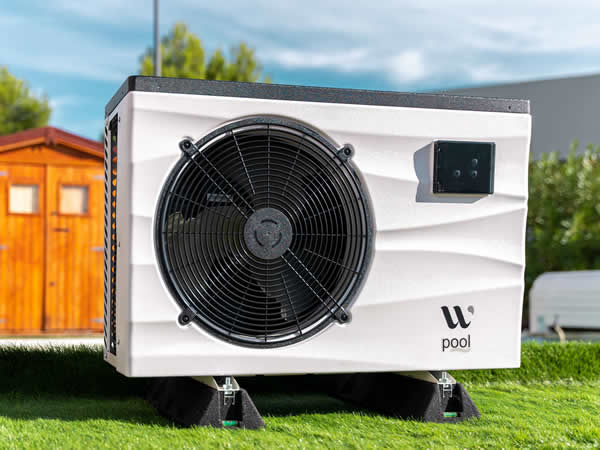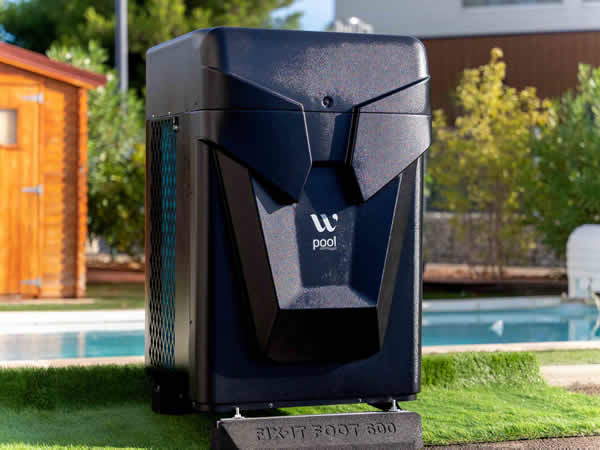
Horizontal heat pump versus vertical heat pump
Whether vertical or horizontal, swimming pool heat pumps have the same technical characteristics, identical performance (at equal power) and operate in the same way. So what is a swimming pool heat pump? What makes a vertical heat pump different from a horizontal heat pump? What are their advantages and disadvantages? Why choose one over the other?
The horizontal pool heat pump

The horizontal heat pump is the most widely used in Europe. The major difference with the vertical heat pump is the positioning of the fan which is located on the front of the device. As a result, the installation conditions are subject to space rules which must be sufficient for the heat pump to make the most of the ambient air and to operate optimally. It is generally necessary to provide a distance of fifty centimeters between the heat pump and the wall and a clearance of two to three meters on the front.
Thus placed, the fan projects cold air on the front of the heat pump. This can be a certain inconvenience when passing near the heat pump or when the chair for sunbathing is placed nearby. It is therefore necessary to determine the right location before installing the device to prevent the cold blast from bothering bathers.
Less high but longer and bulkier than the vertical heat pump, it remains however more discreet , more aesthetic and integrates better with the environment of the pool area.
The vertical pool heat pump

The vertical heat pump is more often used in Anglo-Saxon countries. This time, the fan is placed on the top of the device and pushes the cold air upwards and not on the front. The advantage: no shivers when passing close to it!
On the other hand, as a result, leaves and anything that may fall from the sky (rain) are likely to pass through the grid and finish their races in the heat pump. It is therefore necessary to regularly remove the impurities which would have slipped in and could prevent the proper functioning of the device. It is also for this reason that it is advisable to protect the vertical heat pump with an awning or a technical room.
The vertical heat pump does not need an electrical outlet. air on its sides since the fan is positioned on the top. It can therefore be installed along a wall without space constraints. From the moment the air can circulate on the top of the machine, the place where it is placed can be very cramped. It is ideal for tight spaces.
The fan throws the air upwards, the noise level is less noticeable. The vertical heat pump is often quieter than a horizontal heat pump.
Although more compact, less wide and higher than the horizontal heat pump, it seems more massive.
>At equal power, the vertical heat pump is often more expensive than a horizontal heat pump.
There is no fundamental difference between these two types of heat pump for swimming pools. With equivalent characteristics, space constraints, attachment to aesthetics and/or comfort, are criteria that can make the choice lean towards one or the other.
Discover the ranges of horizontal and vertical heat pumps distributed by WPool.
To find out more about the different types of swimming pool heat pumps on the market, find out what is an On/Off heat pump and an Inverter heat pump and what is a 4-season swimming pool heat pump or reversible, and compare the advantages and disadvantages between the classic heat pump versus the Inverter heat pump. We offer you a table of the characteristics of heat pumps for swimming pools to summarize the different heat pumps that exist and thus make your choice more easily.